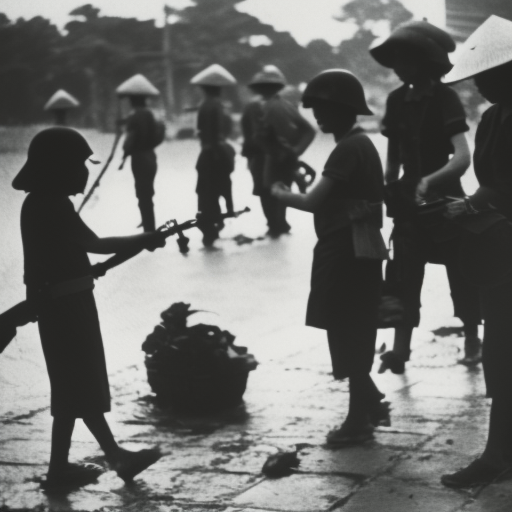Moratorium to End the War in Vietnam: A Call for Peace
The Moratorium to End the War in Vietnam was a series of mass protests and demonstrations held in the United States during the late 1960s. The movement aimed to bring attention to the escalating war in Vietnam and to call for an immediate end to the conflict. The moratorium, which means a temporary suspension of activity, was a powerful expression of public dissent against the war and played a significant role in shaping public opinion.
The Background: The Vietnam War
The Vietnam War was a prolonged conflict that began in the 1950s and lasted until 1975. The United States became involved in the war to prevent the spread of communism in Southeast Asia. However, as the war dragged on, public support for U.S. involvement waned, and opposition to the war grew.
The Birth of the Moratorium
The idea for the Moratorium to End the War in Vietnam originated from a group of activists, including academics, students, and religious leaders. They believed that a large-scale, peaceful protest could effectively convey the public’s dissatisfaction with the war. The movement gained momentum with the support of prominent figures such as Senator Eugene McCarthy and Dr. Benjamin Spock.
The First Moratorium: October 15, 1969
On October 15, 1969, the first Moratorium to End the War in Vietnam took place. It was a nationwide event that saw millions of Americans participate in various forms of protest. People from all walks of life, including students, teachers, and professionals, joined together to express their opposition to the war. Demonstrations were held in major cities, with participants engaging in peaceful marches, rallies, and teach-ins.
The Impact of the Moratorium
The Moratorium to End the War in Vietnam had a profound impact on public opinion and the anti-war movement. It provided a platform for Americans to voice their concerns about the war and demand change. The sheer scale of the protests demonstrated the widespread discontent with U.S. involvement in Vietnam. The movement also helped to galvanize opposition within the government and put pressure on policymakers to reconsider their stance on the war.
Continued Activism: The Second Moratorium
Encouraged by the success of the first Moratorium, organizers planned a second event for November 15, 1969. The second Moratorium saw similar levels of participation and included a wider range of activities. In addition to marches and rallies, participants engaged in acts of civil disobedience, such as sit-ins and draft card burnings. The protests were largely peaceful, but some clashes with law enforcement occurred.
Legacy and Long-Term Impact
The Moratorium to End the War in Vietnam left a lasting impact on American society and the anti-war movement. It helped to shift public opinion against the war and increased pressure on the government to seek a peaceful resolution. The protests also contributed to the eventual withdrawal of U.S. troops from Vietnam in 1973 and the end of the war in 1975.
The Moratorium to End the War in Vietnam serves as a reminder of the power of collective action and peaceful protest. It demonstrated that ordinary citizens could come together to challenge government policies and advocate for change. The movement also paved the way for future activism, inspiring subsequent generations to stand up against injustice and fight for peace.
In conclusion, the Moratorium to End the War in Vietnam was a significant chapter in the history of the anti-war movement in the United States. The protests and demonstrations organized during the moratoriums played a crucial role in shaping public opinion and pressuring the government to end the war. The movement’s legacy continues to inspire activism and serves as a reminder of the power of peaceful protest in effecting change.












